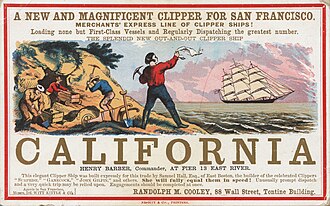
The Grapes of Wrath is an American realist novel written by John Steinbeck and published in 1939. The book won the National Book Award and Pulitzer Prize for fiction, and it was cited prominently when Steinbeck was awarded the Nobel Prize in 1962.
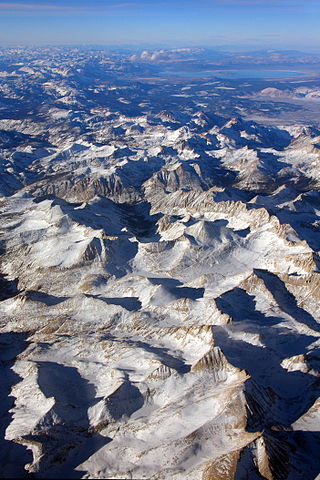
The Sierra Nevada is a mountain range in the Western United States, between the Central Valley of California and the Great Basin. The vast majority of the range lies in the state of California, although the Carson Range spur lies primarily in Nevada. The Sierra Nevada is part of the American Cordillera, an almost continuous chain of mountain ranges that forms the western "backbone" of the Americas.

The California Gold Rush (1848–1855) was a gold rush that began on January 24, 1848, when gold was found by James W. Marshall at Sutter's Mill in Coloma, California. The news of gold brought approximately 300,000 people to California from the rest of the United States and abroad. The sudden influx of gold into the money supply reinvigorated the American economy; the sudden population increase allowed California to go rapidly to statehood in the Compromise of 1850. The Gold Rush had severe effects on Native Californians and accelerated the Native American population's decline from disease, starvation and the California genocide.
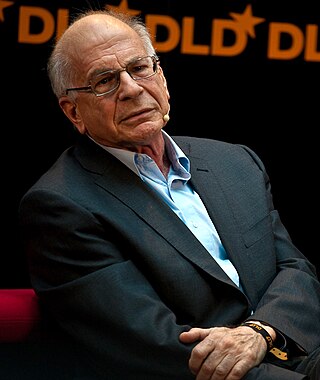
Daniel Kahneman is an Israeli-American author, psychologist and economist notable for his work on hedonic psychology, psychology of judgment and decision-making, as well as behavioral economics, for which he was awarded the 2002 Nobel Memorial Prize in Economic Sciences. His empirical findings challenge the assumption of human rationality prevailing in modern economic theory.
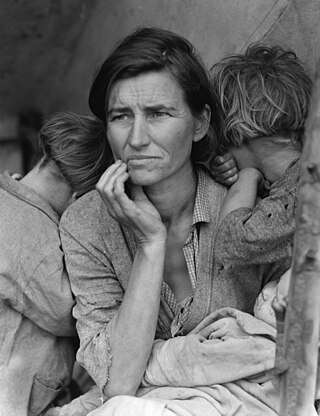
An Okie is a person identified with the state of Oklahoma, or their descendants. This connection may be residential, historical or cultural. For most Okies, several of these connections exist and are collectively the source of their being Oklahoman. While not an official demographic used or recognized by the United States Census Bureau, Okies, due to various factors, have developed their own distinct culture within larger social groupings both akin to and separate from Midwestern and Southern influences. Included are their own dialect, music, and Indigenous-derived folklore.
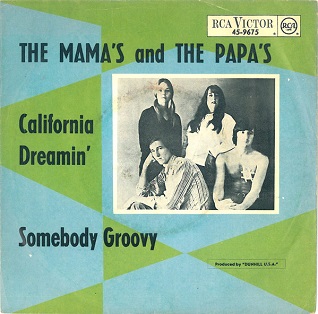
"California Dreamin'" is a song written by John Phillips and Michelle Phillips in 1963 and first recorded by Barry McGuire. The best-known version is by the Mamas & the Papas, who sang backup on the original version and released it as a single in December 1965. The lyrics express the narrator's longing for the warmth of Los Angeles during a cold winter in New York City. It is recorded in the key of C-sharp minor.
Gerald William Haslam was an author focused on rural and small towns in California's Great Central Valley including its poor and working-class people of all colors. A native of Oildale, California, Haslam has received numerous literary awards.

Golden Dreams is a film about the history of California. It was a featured attraction at Disney California Adventure Park at the Disneyland Resort in Anaheim, California, opening with the park on February 8, 2001. It starred Whoopi Goldberg as Calafia, the Queen of California. On September 7, 2008, the last showing of the film to the public was made. The theater was razed in July 2009 and was replaced by The Little Mermaid: Ariel's Undersea Adventure. However, the exterior replica of the Bernard Maybeck's Palace of Fine Arts remained. The final showing took place as a private showing for cast members on March 26, 2009.
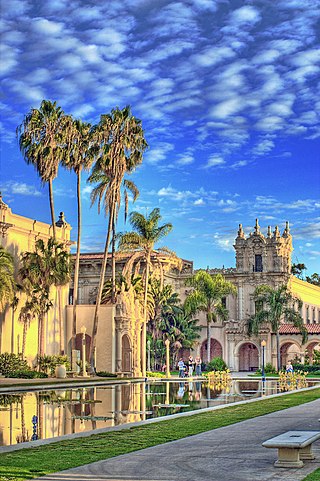
The written history of the San Diego, California, region began in the present state of California when Europeans first began inhabiting the San Diego Bay region. As the first area of California in which Europeans settled, San Diego has been described as "the birthplace of California."

The Grapes of Wrath is a 1940 American drama film directed by John Ford. It was based on John Steinbeck's 1939 Pulitzer Prize-winning novel of the same name. The screenplay was written by Nunnally Johnson and the executive producer was Darryl F. Zanuck.

Dust Bowl Ballads is an album by American folk singer Woody Guthrie. It was released by Victor Records, in 1940. All the songs on the album deal with the Dust Bowl and its effects on the country and its people. It is considered to be one of the first concept albums. It was Guthrie's first commercial recording and the most successful album of his career.
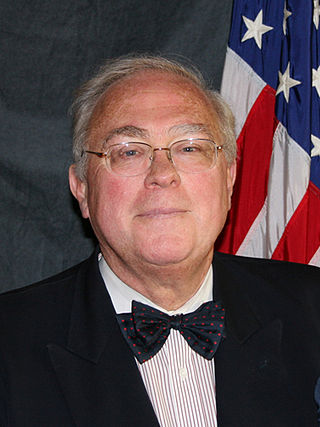
Kevin Owen Starr was an American historian and California's state librarian, best known for his multi-volume series on the history of California, collectively called "Americans and the California Dream."

The history of California can be divided into the Native American period, the European exploration period (1542–1769), the Spanish colonial period (1769–1821), the Mexican period (1821–1848), and United States statehood. California was one of the most culturally and linguistically diverse areas in pre-Columbian North America. After contact with Spanish explorers, many of the Native Americans died from foreign diseases. Finally, in the 19th century there was a genocide by United States government and private citizens, which is known as the California genocide.

Gold became highly concentrated in California, United States as the result of global forces operating over hundreds of millions of years. Volcanoes, tectonic plates and erosion all combined to concentrate billions of dollars' worth of gold in the mountains of California. During the California Gold Rush, gold-seekers known as "Forty-Niners" retrieved this gold, at first using simple techniques, and then developing more sophisticated techniques, which spread around the world.

The Grapes of Wrath is an opera in three acts composed by Ricky Ian Gordon to a libretto by Michael Korie based on John Steinbeck’s 1939 novel of the same title. It premiered on February 10, 2007 at the Ordway Center for the Performing Arts in Saint Paul, Minnesota in a production by Minnesota Opera. The work has been revised in subsequent years and has also been performed as a two-act concert version.
Birth of a Community: Jews and the Gold Rush is a 1994 documentary film directed by Bill Chayes. The film traces the history of Jews and the experiences that tempted this group and others to the American West Coast by the prospect of being financially established by mining gold.

This is a bibliography of Los Angeles, California. It includes books specifically about the city and county of Los Angeles and more generally the Greater Los Angeles Area. The list includes both non-fiction and notable works of fiction that significantly relate to the region. The list does not include annual travel books, recipe books, and currently does not contain works about sports in the region.
John Boessenecker is an American historian and author, and a lawyer specializing in trust and estate litigation. He is based in San Francisco, California.
White Californians are White Americans living in California who currently comprise 41.2% of the state's population according to the official 2020 census.

This is a bibliography of California history. It contains English language books and mainstream academic journal articles published after World War II.
